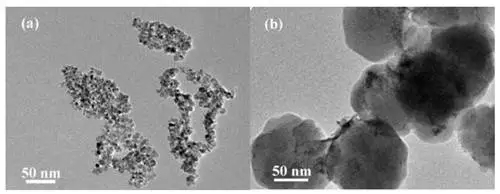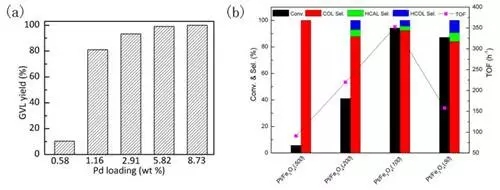Recently, the Institute of Solid State Physics, Chinese Academy of Sciences’ Institute of Solid State Physics, Center for Environment and Energy Nanomaterials has been converting catalytically selective hydrogenation of biomass-unsaturated oxygen compounds (levulinic acid, cinnamaldehyde, etc.) to high value-added chemicals and fuels. make a progress. Relevant research results were published in Catalysis Communications (Catal. Commun. 93, 10-14 (2017)) and RSC Advances (RSC Adv. 7 21107-21113 (2017)).
The use of "hydrogenation and deoxygenation" strategies is a key technology that catalyzes the transformation of raw material quality. In the catalytic reaction, the use of the catalyst and the conditions of the reaction are related to whether the related technology can be practically applied. At present, the catalysts used for this kind of catalytic reaction are mainly supported metal catalysts, but the preparation of the catalyst has the problems of high cost, complicated process, harsh catalytic reaction conditions (requiring high temperature and high pressure) and difficult separation of catalysts, which limits the catalysts. widely used. Therefore, the use of a simple, efficient and green method to synthesize catalysts with high activity and selectivity under mild reaction conditions has been widely used by researchers for the selective hydrogenation of unsaturated oxygen compounds.
The center's researchers used a redox reaction initiated by a different reduction potential difference between the metal and the carrier precursor to synthesize carrier-coated metal catalysts (Pd/CeO2 and Pt/Fe3O4 catalysts) in one step (Figure 1(a) and (b)). The metal nanoparticles synthesized by this method are smaller in size and evenly dispersed on the surface or lattice of the support, which is favorable for the adsorption, activation and reaction of the reactants and H2 on the surface thereof.

Figure 1. TEM image of (a) Pd(5.82)/CeO2 catalyst and (b) Pt/Fe3O4(100) catalyst
In addition, carriers with excellent electronic modulation properties (CeO2 and Fe3O4) can effectively regulate the electronic structure of the catalyst metal surface, thereby improving the catalytic activity, selectivity and stability of the catalyst. The experimental results show that the carrier-coated metal catalyst exhibits good activity and selectivity in the catalytic hydrogenation of unsaturated oxygenates. Under mild reaction conditions, levulinic acid can be completely converted to g-valerolactone. (Figure 2(a)), cinnamaldehyde can be selectively hydrogenated to cinnamyl alcohol with conversion and selectivity of 94.2% and 92.2%, respectively. The research work adopts a simple and green method to build catalysts and is applied to the selective catalytic hydrogenation of biomass-unsaturated oxygen compounds, which lays a certain theoretical foundation for the practical application of high-efficiency biomass conversion.

Figure 2. (a) Catalytic Hydrogenation Performance of Pd/CeO2 Catalysts for Levulinic Acid and (b) Selective Catalytic Hydrogenation Performance of Cinnamaldehyde over Pt/Fe3O4 Catalysts
The research work was funded by the Chinese Academy of Sciences Equipment Development Project, the National Natural Science Foundation, the Chinese Academy of Sciences 100-person plan and the International Innovation Team Project.
Buffet Of Equipment,Kitchenware Products,Common Kitchen Ware,Kitchen Cooking Ware
Shaoxing Biaoyi Hardware Products Co., Ltd. , https://www.byeob.com